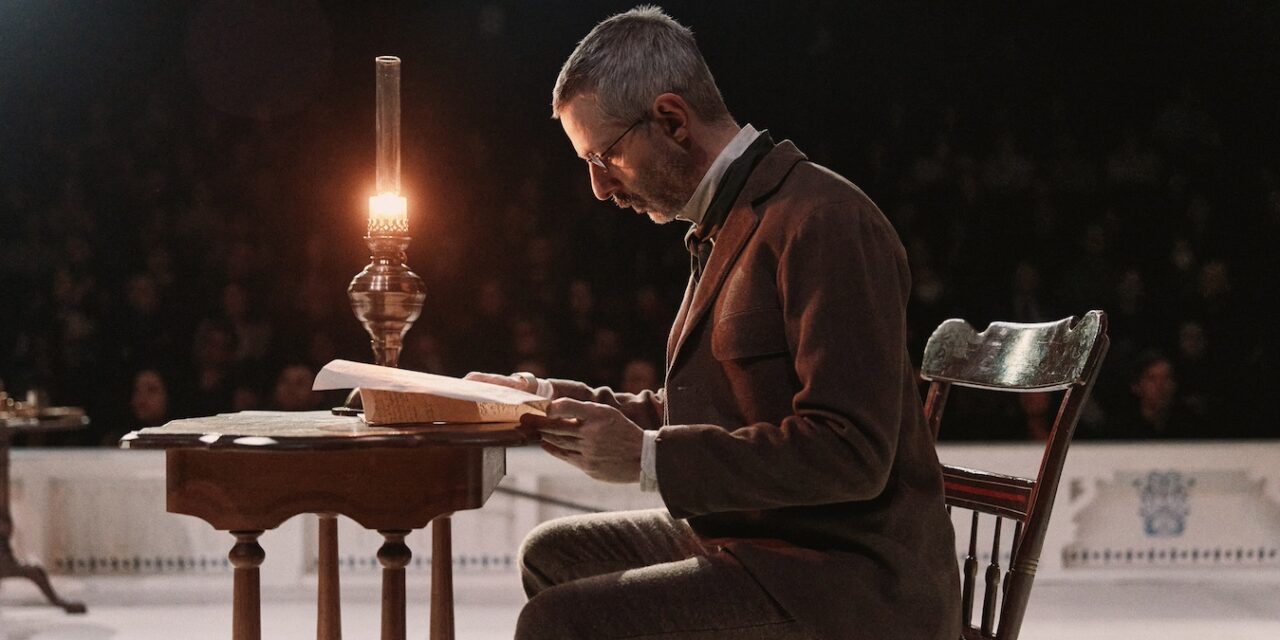Theater Review by Carol Rocamora . . . .
“Our town is sick . . . diseased . . . All our spiritual sources of life are poisoned, and our society is built on a heap of lies.”
Sounds like a line from a new play about our ailing times, doesn’t it? Well, it isn’t. It’s from a 142-year-old work by Henrik Ibsen called An Enemy of the People, and you can hear it ringing out at the Circle in the Square Theatre on Broadway, as fresh and as urgent as if it were written today.
The fact that not one but two versions of this classic are running simultaneously this month—one in London (starring Matt Smith) and one in New York (starring Jeremy Strong)—reaffirms just how relevant this play is now.
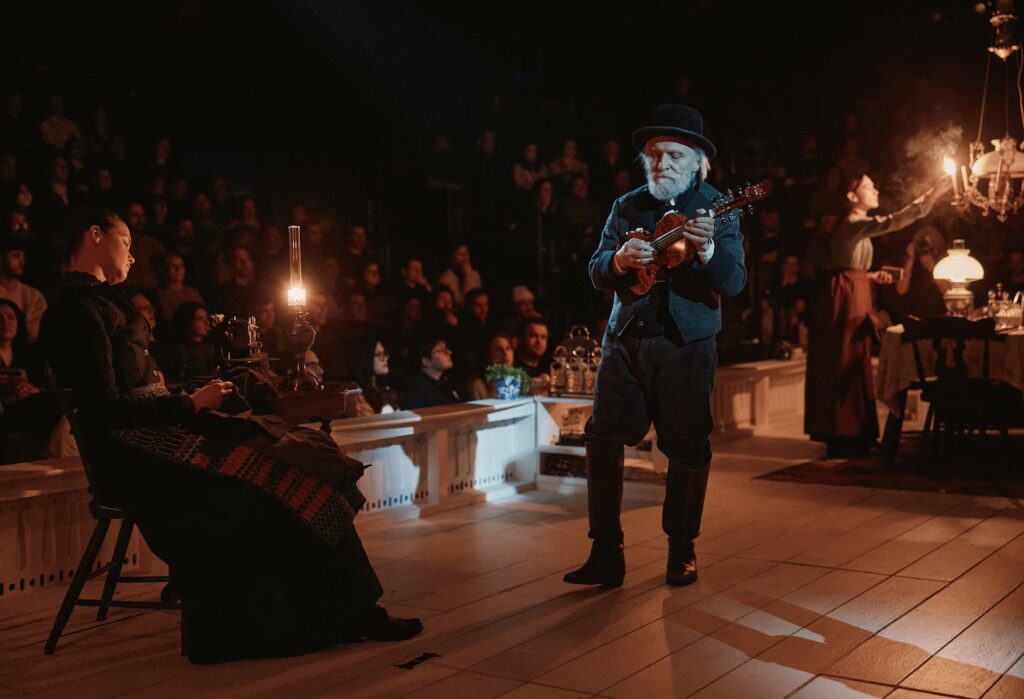
Set at the end of the 19th century, An Enemy of the People is the Norwegian version of Our Town—one that goes wrong, very wrong, right before our eyes. Dr. Thomas Stockmann (Jeremy Strong), the play’s protagonist and medical director of the local baths in a small Norwegian town, has made a frightening discovery at the top of the play. The baths are contaminated, polluted by the tanneries upon which they were built. The water is ripe with bacteria, and Dr. Stockmann feels it his duty to report his findings to the people of the town, to alert them of an impending public health disaster if they were to drink or bathe in the water. “Our town is unhealthy,” he declares to the receptive Hovstad (Caleb Eberhardt), editor of the People’s Messenger, who agrees to publish Stockmann’s report. Aslaksen (Thomas Jay Ryan), the printer, a community leader, is also supportive of publishing it.
Dr. Stockmann’s intentions are what fuels the flames of this melodramatic story. He is faced with immediate opposition from his brother Peter, the town’s mayor (played by Michael Imperioli), who declares that Thomas’s proposal to reroute the water would take two years and jeopardize the town’s economy. Using his political power and clout, the mayor mounts a public opinion campaign against his brother’s position, threatening that any repairs to the baths would have to come from taxpayers’ money. Ultimately, the editor and printer buckle under political pressure and economic threats to their newspaper. They change sides, opposing Thomas’s efforts and refusing to publish his report.
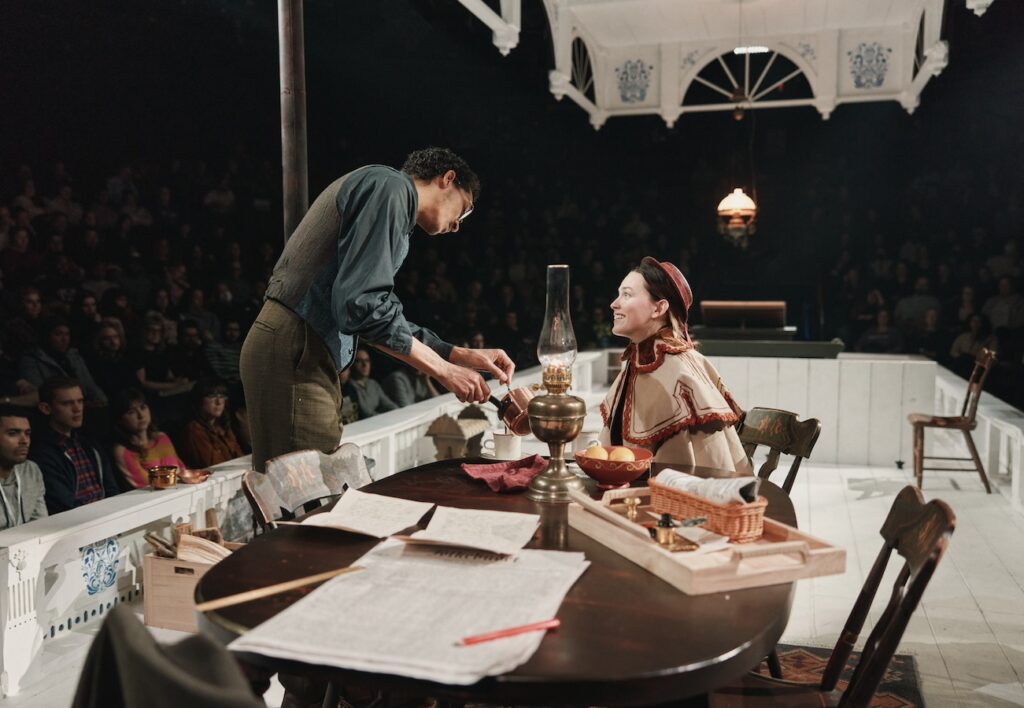

The conflict between Thomas and the opposing forces in the town rallied against him by his brother Peter reaches a climax at an explosive town meeting. It’s one of the most exciting dramatic moments on Broadway this season. Taking full advantage of the Circle in the Square’s theater-in-the-round configuration, director Sam Gold brings up the house lights, signals to some audience members to join the actors on the stage, and invites the rest of the audience to be included in the town meeting. During this sensational scene, Thomas tries to make his speech, appealing desperately to the entire audience: “People are going to die!” But the crowd onstage turns into a violent mob against Thomas. “Anybody who wants to bring his society down is an enemy of the people,” they cry. “Folkefiende”!!!! They proceed to stone Thomas onstage (actually, they’re throwing huge blocks of ice at him from coolers that were brought onstage during intermission to chill the liquor that the actors were offering the audience—cleverly, director Gold had expanded the mayor’s public opinion campaign to involve us as well.)
Unlike Chekhov, whose dark worldview is gentle and subtle, Ibsen spells his out loud and clear. This is a play about numerous explicitly articulated themes that are relevant today—emanating from the seminal idea of the individual vs society. The role of the idealist; the shaping of public opinion; the unpredictability of the mob; power and its ability to corrupt; and the manipulation of the truth (i.e. “alternative facts”)—these are the substantial themes that fill the play to the point of overflowing. And there are more. “There is something to be said for being at the bottom—you know where the ground is,” and so on. “What are people capable of?” asks Petra (Victoria Pedretti), Thomas’s loyal daughter. That’s the question that frightens me the most, given what we’re witnessing in our troubled world today..
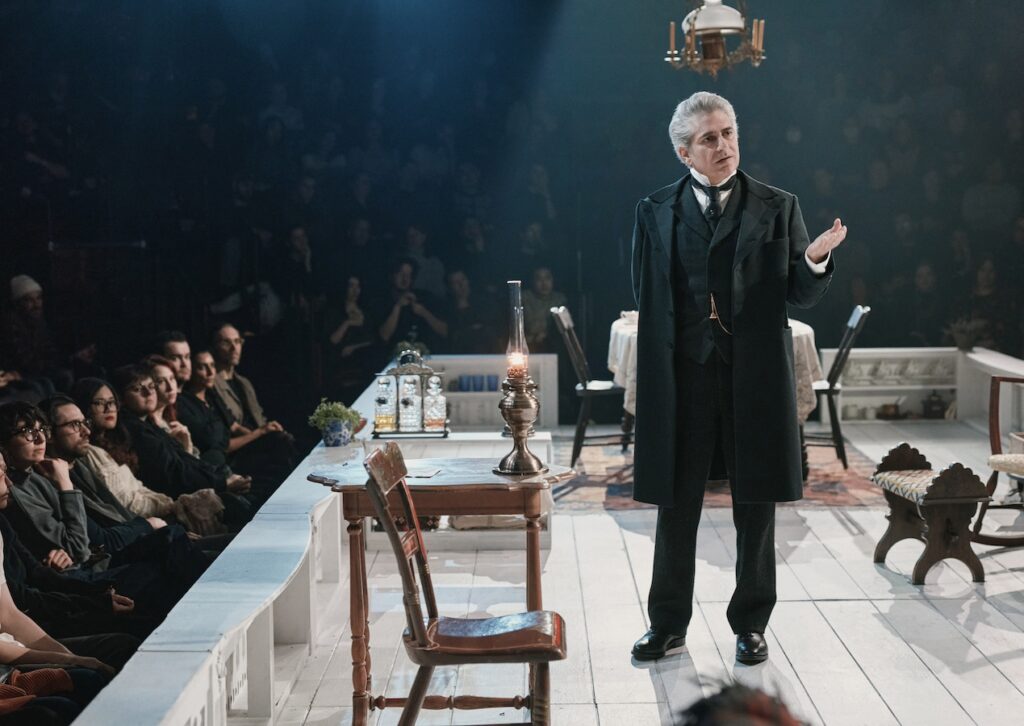

There is so much praiseworthy theater artistry in this production. Gold directs his able ensemble on an open stage (designed by the “dots” collective). Retaining the original flavor of the period (costumes by David Zinn), the magical lighting (by Isabella Byrd) intensifies the dramatic excitement—first with dreamy candle chandeliers overhead, and then with the sudden blinding house lights during the town meeting. The scenes are framed with Norwegian folk music played by David Patrick Kelly, who doubles in the role of Morten Kiil, Thomas’s father-in-law. Sometimes melancholy, other times spirited, the music (and the Norwegian folk songs sung by the cast) are a vividly colorful element. (Kiil provokes a last-moment plot twist when he announces to his son-in-law Thomas that he has bought all the shares to the tanneries upon which the baths sit with the money he had intended to leave to his grandchildren Petra and Eilif, thereby plunging Thomas deeper into a moral double-bind.)
Centerstage in this moral maelstrom stands Thomas, played with quiet charisma by Jeremy Strong (of HBO’s “Succession” fame). Strong presents his character as a soft-spoken, almost apologetic idealist whose voice and conviction increase in volume as the plot unfolds. It’s a powerful choice of character portrayal, and his courage, strength, and resolve remain steadfast against the turning tide.
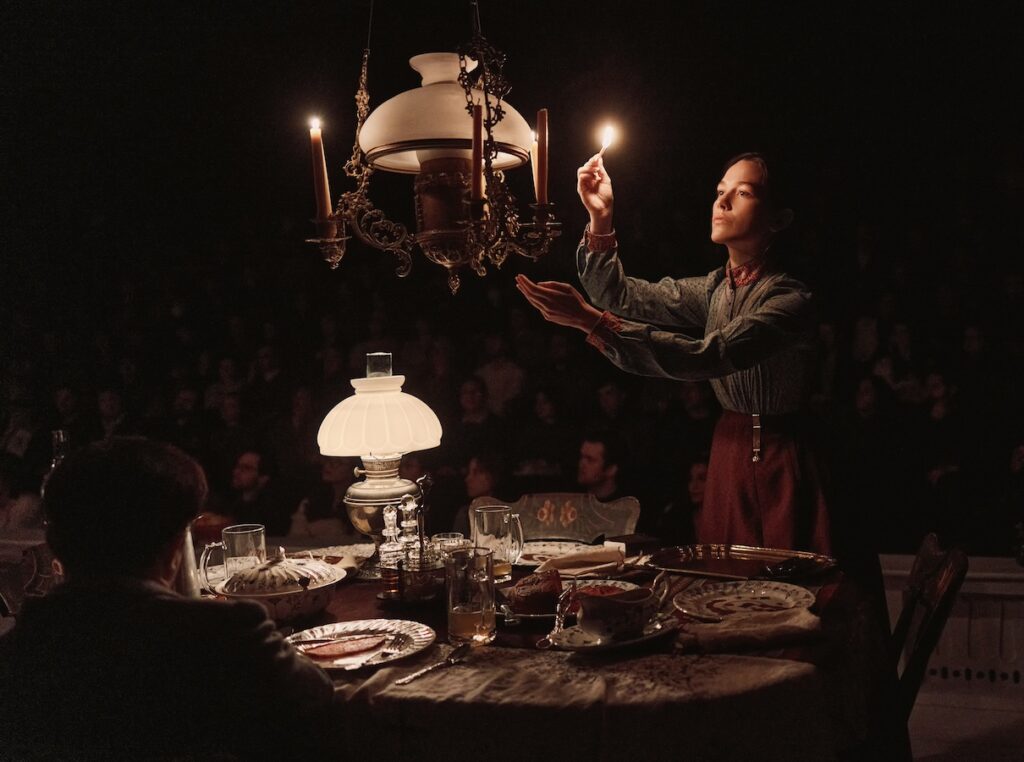

Gold’s production will go down in theater history as a memorable revival (it’s this director’s best work to date, in my view). Arthur Miller adapted the play in 1950, starring Frederick March as Thomas and Morris Carnovsky as Peter. Since then, Thomas has been played by numerous fine actors, including Tom Wilkinson and Ian McKellen. This revival will be remembered for Strong’s unique portrayal, the magical production values, Gold’s fluid direction, the atmosphere-enhancing Norwegian music—and of course that dynamite town meeting scene. Amy Herzog’s crystal-clear, contemporary version of Ibsen’s text flows naturally and easily (though spiced with the occasional “OK”, “gosh”, and even “what the f***”—but never mind, the audience loved it.)
“The strongest man in the world is the one who stands most alone.” It’s a concluding line in the play’s original text, and it stands out as the essential definition of an Ibsen protagonist. Each era has had its Thomas Stockmann—like Dr. Anthony Fauci or Liz Cheney today—who have had the courage to stand alone. The urgent question is: Who will stand with them, and when?
An Enemy of the People. Through June 16 at Circle in the Square Theatre (235 West 50th Street, between Broadway and Eighth Avenue). www.anenemyofthepeople.com
Photos: Emilio Madrid


